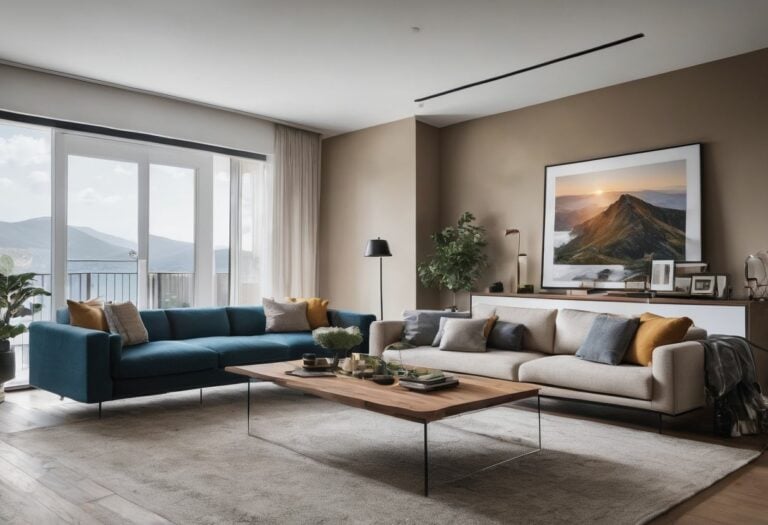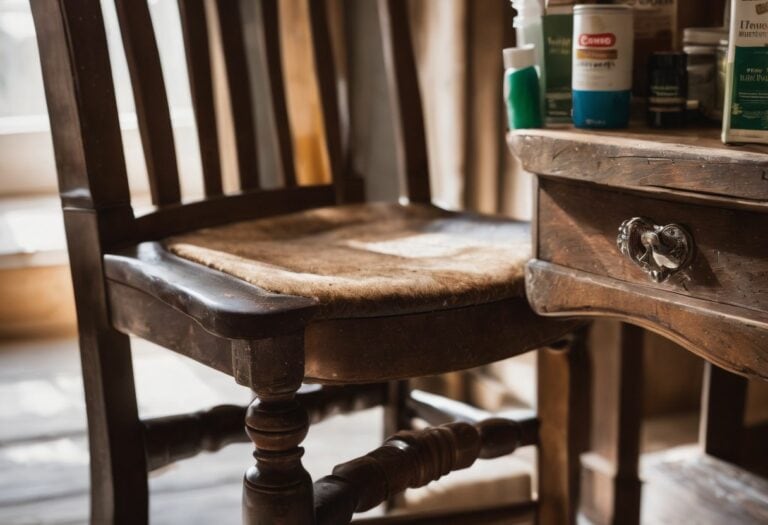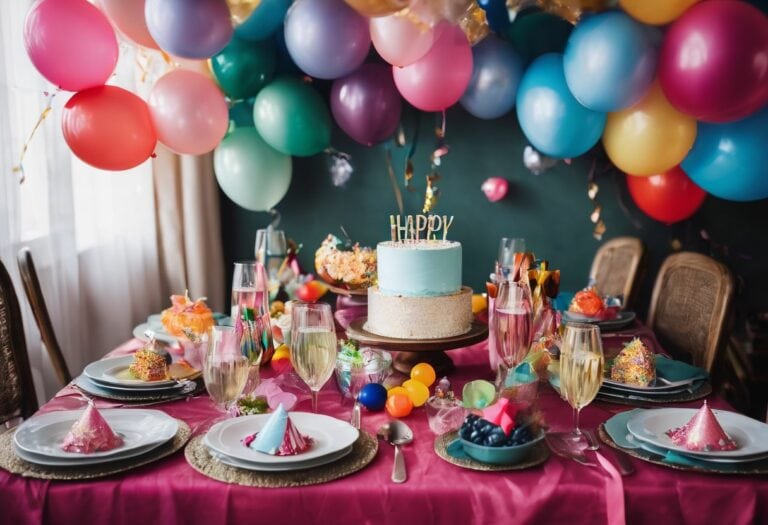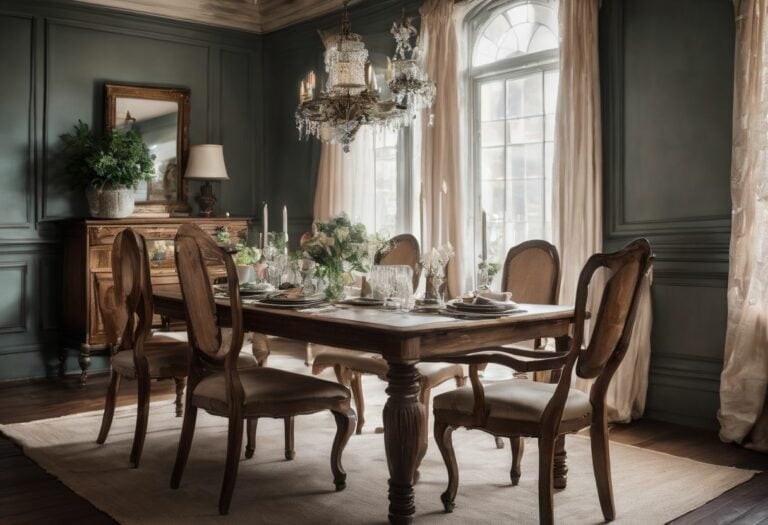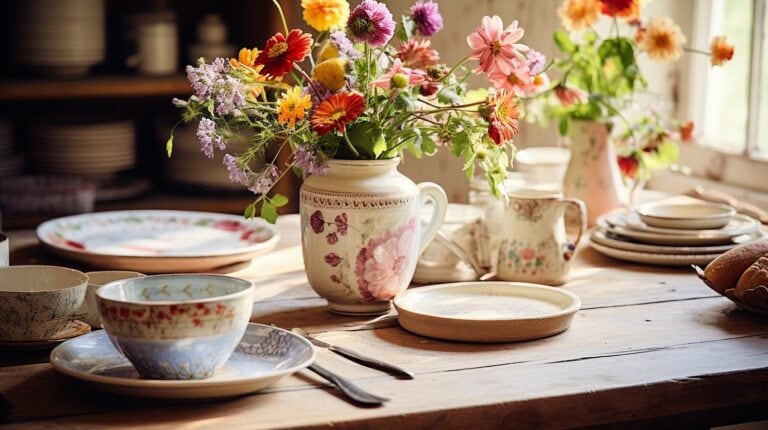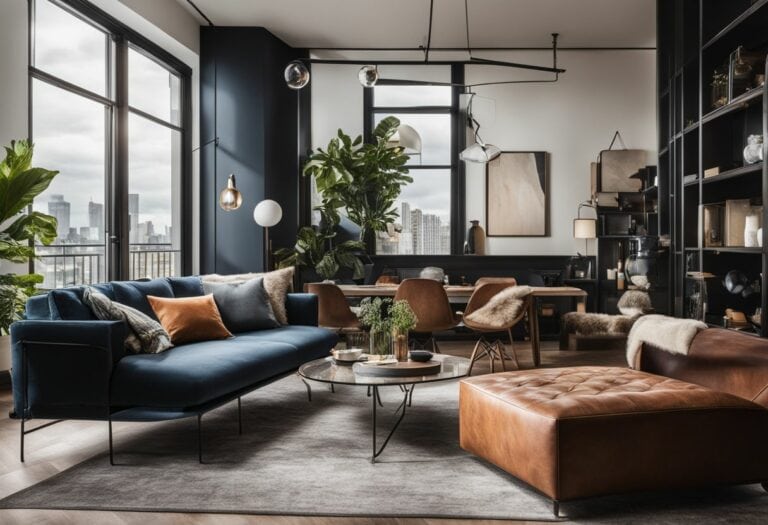Mastering Your Furnishing Finances: How Do You Calculate Furniture Budget Effectively
Are you finding it a challenge to nail down the ideal sum for your home furniture budget? I completely understand – as someone who has waded through heaps of research and tackled this exact puzzle, let me assure you – It’s not as straightforward as punching numbers into a calculator.
How about if I share that according to the National Association of Home Builders, homeowners tend to spend roughly 5-15% of their home value just on furnishings? This blog post is designed with you in mind, hoping to guide you step-by-step in creating an attainable and practical furniture budget for your dream abode.
Stick around because trustworthy budgeting insights are only a few scrolls away!
Key Takeaways
- Determine a realistic furniture budget by considering factors such as the size and style of your home, quality and durability of furniture, and timing of purchases.
- Prioritize essential items over nonessential ones to stay within your budget while still creating a comfortable and stylish home.
- Look for deals, discounts, or secondhand options to save money on furniture and decor purchases without sacrificing quality or aesthetics.
How Do You Calculate Furniture Budget: Factors to Consider When Calculating Your Furniture Budget

When calculating your furniture budget, it’s important to consider factors such as the size and style of your home, as well as the quality and durability of the furniture you’re interested in.
Additionally, take into account the seasonality of purchasing, as prices may fluctuate throughout the year.
Size and style of your home
Your home size plays a big part in your furniture budget. Large homes need more furniture than small ones. For example, you may need extra sofas or dining chairs for a large living space.
The style of the home also affects the price. Some styles call for special items that cost more money. If you choose to have an elegant royal design, you might end up paying more for fancy furniture pieces compared to if you opt for a simple modern look with basic yet stylish items.
Quality and durability of furniture
Quality matters a lot in furniture. Strong, long-lasting items often cost more. The materials used can tell us about the quality. Good wood or metal make the furniture last longer.
Also, how it is built plays a part. Well-made items don’t break easily and stay good for years to come.
The making process also counts too. Mass-produced ones may be cheaper but not always good. Those with complex design might cost you more as well.
Your room’s size and layout matter too when choosing your pieces of furniture. You want them to fit right in without feeling cramped up or empty.
Lastly, think about transport fees before deciding on heavy or large ones that need special means for moving into your home.
Seasonality of purchasing
Buying furniture at the right time is a savvy move. Many stores offer big sales during certain months. February and August are known for their good deals on furniture. This is because new styles come into stores in the spring and fall.
Old styles must go to make room, so they get marked down. Plan your shopping around these times to save money on quality pieces!
Budgeting for Primary Homes vs Second Homes or Cabins
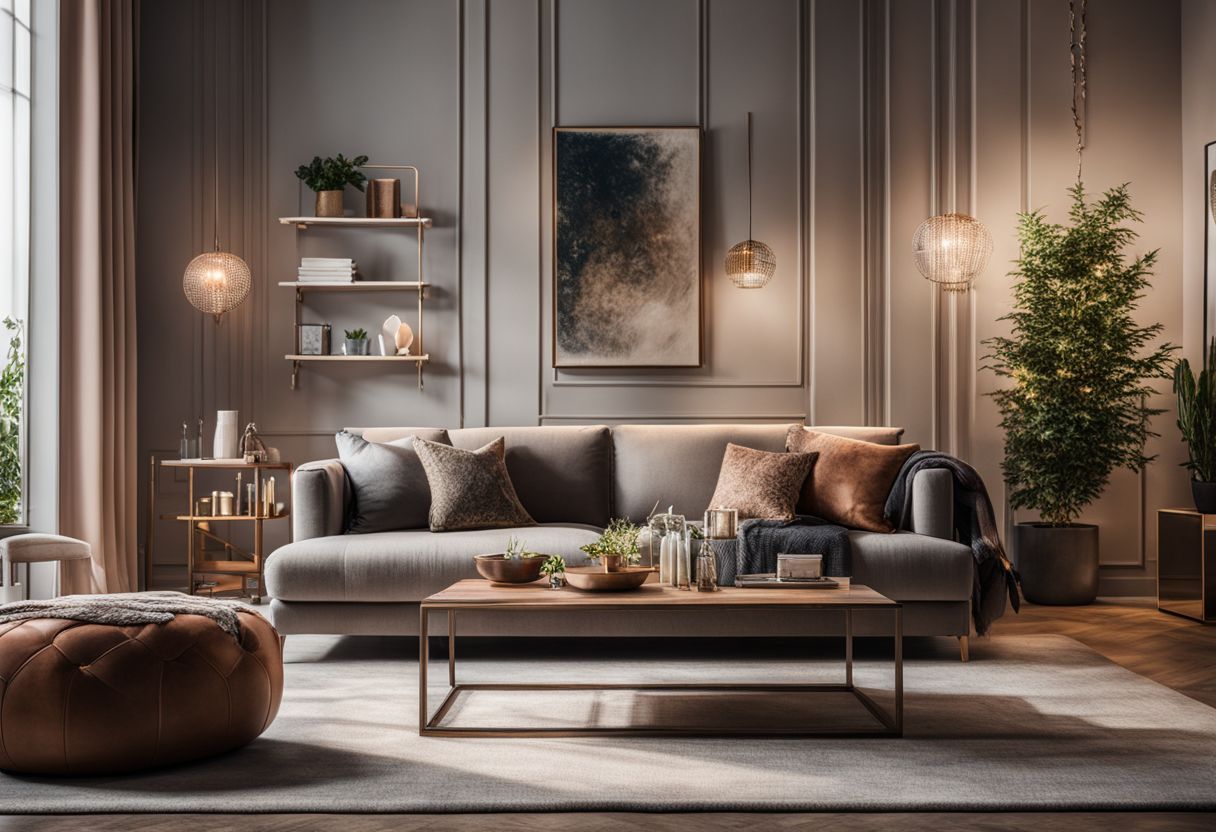
When budgeting for furniture, it’s important to consider whether you’re furnishing a primary home or a second home or cabin. The budgeting approach can be different for each type of property.
For your primary home, you’ll likely want to invest more in high-quality and durable furniture that can withstand daily use. This might mean allocating a larger portion of your overall budget towards furnishings.
On the other hand, when furnishing a second home or cabin, you may choose to prioritize cost-effectiveness and versatility. Since these properties are often used less frequently, you might not need as much furniture or decor items.
This could allow you to allocate a smaller portion of your budget towards furnishings.
It’s also worth considering the size and style of each property when setting your budget. Larger homes will generally require more furniture, which can result in higher costs. Additionally, if you have specific design preferences or want to achieve a certain aesthetic, this may impact how much you allocate towards furnishings.
Remember: Setting a realistic budget is key regardless of whether it’s for a primary home or second home/cabin. By carefully considering the factors mentioned above and using them as guidelines while determining your furniture budget, you can make informed decisions that suit your needs and financial situation without overspending.
Basics Categories in a Furniture and Decorating Budget
Furnishings, décor, and home improvement costs are the key categories to consider when creating your furniture budget. Want to know more about how to allocate your budget efficiently? Keep reading!
Furnishings
When it comes to furnishing your home, one important category to consider in your budget is furnishings. This includes essential furniture pieces like sofas, beds, tables, and chairs.
The cost of furnishings can vary depending on factors such as the size and style of your home, the quality and durability of the furniture you choose, and whether you’re purchasing during a season with sales or discounts.
When setting a realistic budget for furnishings, it’s important to prioritize your purchases based on what you need most. You can also save money by looking for deals and discounts or considering secondhand or DIY options.
By carefully planning and budgeting for furnishings, you can make sure that your home is comfortable and stylish without breaking the bank.
*Sources:
– https://www.homestratosphere.com/how-to-budget-furniture-house/
Décor
Decorating your home is an important part of creating a comfortable and inviting space. When it comes to budgeting for decor, you’ll want to set aside some funds specifically for this category.
Decor includes items like rugs, curtains, artwork, and accessories that add personality to your home. While the cost of decor can vary depending on your personal style and preferences, you can expect to spend around $500 or more on these items.
It’s important to prioritize what’s most important to you and shop around for deals or consider DIY options if you’re looking to save money. Remember, adding the right decor touches can make a big difference in how your home looks and feels.
Home improvement costs
When budgeting for home improvement costs, it’s important to consider the specific categories in your furniture and decorating budget. These categories include furnishings, décor, and any expenses related to improving your home.
Furnishings refer to the actual furniture pieces you need, such as sofas, beds, and tables. Décor includes items like curtains, rugs, and wall art that add style to your space. Home improvement costs can include things like painting walls or installing new flooring.
By considering these different categories and planning accordingly, you can make sure to allocate funds for each aspect of your home improvement project.
Tips for Staying on Your Furniture and Decorating Budget
To stay on your furniture and decorating budget, set a realistic budget that aligns with your financial situation and goals. Prioritize your purchases by identifying the essential items first and then adding non-essential items as your budget allows.
Look for deals and discounts to save money on furniture and decor purchases. Consider secondhand or DIY options to get quality pieces at lower prices.
Set a realistic budget
Setting a realistic budget is an important step when calculating your furniture budget. It’s easy to get carried away and spend more than you initially intended, so it’s essential to determine how much you can comfortably afford to spend.
Take into consideration your overall financial situation and prioritize your needs versus wants. Think about what pieces of furniture are necessary for each room and allocate a specific amount for each item.
Be mindful of any additional costs such as delivery fees or assembly charges that may affect your budget. By setting a realistic budget from the start, you can avoid overspending and maintain control over your furniture expenses.
Remember: Establishing a reasonable budget doesn’t mean sacrificing style or quality. There are plenty of affordable options available if you take the time to research and compare prices.
Look out for sales, discounts, or clearance items that fit within your budget without compromising on durability or aesthetics. Additionally, consider secondhand furniture or do-it-yourself projects as cost-effective alternatives to buying brand new items.
Prioritize your purchases
When budgeting for furniture and decor, it’s important to prioritize your purchases wisely. Start by making a list of necessary furniture items you need for your home. Determine the importance of each purchase based on what is essential for creating a functional living space.
Allocate funds for essential living space items first before considering nonessential ones. Focus on identifying functional and practical furniture options that meet your needs without breaking the bank.
Look for cost-effective ways to furnish your home, such as shopping during sales or looking for discounts and deals. Consider secondhand or DIY options to save money as well. By prioritizing essential furniture pieces over nonessential ones, you can stay within your budget while still creating a comfortable and stylish home.
Look for deals and discounts
I always make sure to look for deals and discounts when I’m furnishing and decorating my home. It’s a great way to save money and stay on budget. I research prices from different companies to compare and find the best deals.
I also pay attention to seasonal sales cycles, like holiday promotions or end-of-season clearance events, where furniture is often marked down. By taking advantage of these bargains, I can get high-quality pieces at reduced prices, which helps me stick to my budget without compromising on style or durability.
So if you’re looking to furnish your home without breaking the bank, make sure to keep an eye out for special offers, coupons, markdowns, and other savings opportunities!
Consider secondhand or DIY options
When you’re trying to stick to a budget for furniture and decorating, considering secondhand or DIY options can be a smart move. You don’t always have to buy brand new furniture or decor items.
Instead, you can explore thrift stores, online marketplaces, and garage sales for affordable finds. Additionally, you can get creative with do-it-yourself projects by repurposing old furniture or upcycling items for a budget-friendly makeover.
This way, you can save money while still achieving the look and style you want for your home. By considering these secondhand or DIY options, you’ll be able to furnish and decorate your space without breaking the bank.
Average Cost of Furnishing a House by Room Type
Discover the average costs of furnishing each room in your house and get a better idea of how to allocate your furniture budget effectively.
Master bedroom
Furnishing a master bedroom can cost anywhere from $1,000 to $15,000 or even more. The price depends on factors like the size of the bed and the quality of the mattress. When budgeting for your master bedroom, it’s important to consider its significance to you.
Think about what furniture you need, such as a bed frame, dresser, nightstands, wardrobe, bedside lamps, curtains or blinds. Don’t forget about wall art or mirrors and bedding and pillows too.
The overall cost will vary based on these items and any additional flooring or carpeting you might want.
Guest bedroom
Furnishing a guest bedroom can vary widely in cost, depending on your style and preferences. On the lower end, you could spend under $1,000 for essential furniture like a bed, dresser, and nightstand.
However, if you’re looking for higher-quality pieces or want to include additional items like a desk or seating area, the cost can exceed $20,000. The average cost of furnishing a guest bedroom with just the basics falls between $1,910 and $3,600.
Remember to factor in any decor expenses as well when calculating your budget.
Bathroom
When budgeting for furnishing a bathroom in your home, it’s important to keep some factors in mind. The average cost of furnishing a bathroom in the US is not specified, but you should consider the size and style of your bathroom when determining your budget.
Additionally, think about the quality and durability of the furniture you want to purchase. While there is no specific data on the national average cost, it’s essential to set a realistic budget that aligns with your needs and preferences.
You can also look for deals and discounts or consider secondhand or DIY options to stay within your budget range. So remember to prioritize what you need most for your bathroom while staying mindful of price ranges and available options out there!
Living room
When furnishing your living room, it’s important to consider your budget. The average cost to fully furnish a living room can range from $4,000 to $18,000. This amount varies depending on the size of the room and the specific furniture pieces you choose.
For example, a sofa can range in price from $500 to $5,000. Coffee tables and TV stands can cost between $100 and $2,000. Lighting fixtures and carpets also add to the overall cost.
On average, furnishing a living room can total anywhere between $2,680 and $4,700. So when planning your budget for this space in your home, keep these costs in mind.
In my experience as an interior designer, I’ve seen that quality is an important factor when choosing furniture for your living room. Investing in durable pieces will ensure they last longer and save you money in the long run.
Dining room
Calculating the average cost of furnishing a dining room is important when creating your furniture budget. The expenses for furnishing a dining room can vary depending on your preferences and budget.
On average, it can range from $1,500 to $6,500 or more. This includes the cost of dining room furniture like tables and chairs, as well as decor such as lighting fixtures and accessories.
When determining your expenses for a dining room setup, consider factors like the size of the space and the style you want to achieve. By setting a realistic budget and prioritizing your purchases, you can furnish your dining room in a way that fits your needs and tastes without overspending.
Kitchen
In furnishing a house, the kitchen is an important space to consider. When it comes to budgeting for your kitchen, you can expect to spend anywhere from $1,700 to $3,450. This includes things like kitchen appliances, cabinets, countertops, sinks, furniture, lighting fixtures, decor items,and utensils.
It’s important to prioritize your purchases and look for deals or discounts when buying these items. Additionally,you could consider secondhand or DIY options to save money while still getting what you need for your kitchen.
Home office
When calculating your furniture budget, it’s important to consider the cost of furnishing a home office. Unfortunately, there is no specific information available on the average cost or budget range for this particular room type.
Additionally, the quality of furniture chosen for a home office in relation to the overall budget is not discussed. However, when setting your budget for furnishing a house, be sure to allocate funds for essential items such as a desk, chair, storage solutions, and any additional equipment or accessories you may need.
It’s also worth considering secondhand or DIY options to help stretch your budget further.
Outdoor space
Furnishing your outdoor space is an important part of creating a comfortable and enjoyable home. Whether you have a small balcony or a spacious backyard, there are many options to consider.
Outdoor furniture, such as patio sets and lounge chairs, can range in price from $1,500 to over $100,000. Additionally, you may want to think about accessories like outdoor rugs, lighting fixtures, and landscaping elements.
These can add style and functionality to your outdoor area. Remember that investing in your outdoor space can also increase the resale value of your home. So take the time to design a beautiful and inviting outdoor oasis for yourself and future buyers.
Average Cost of Furnishing a House by Bedroom Count
When considering the average cost of furnishing a home based on the bedroom count, you’ll find there’s quite a range. The costs vary depending on whether you’re furnishing a one-bedroom apartment or a sprawling four-bedroom house.
| Number of bedrooms | Average cost to furnish |
|---|---|
| One Bedroom | $2,500 to $5,000 |
| Two Bedrooms | $5,000 to $10,000 |
| Three Bedrooms | $10,000 to $20,000 |
| Four Bedrooms | $15,000 to $25,000 |
Remember, these are ballpark figures. The total could be at the lower end if you’re okay with economical choices, while if you prefer high-end luxurious furniture the costs could go significantly higher. Therefore, it’s wise to set a realistic budget and stick to it when picking out furniture for your home.
Average Cost of Furnishing a House by Square Footage
Calculating the average cost of furnishing a house by square footage can be quite challenging due to several factors such as location, quality of furniture, and personal style. However, a rough estimate often used by interior designers is about $150 per square foot. This means if you have a 1000 square foot home, you might be looking at approximately $150,000 for furnishing costs. Please keep in mind, this is just a rough estimate and costs can vary enormously.
| Square Footage | Estimated Furnishing Cost |
|---|---|
| 500 sq ft | $75,000 |
| 1000 sq ft | $150,000 |
| 1500 sq ft | $225,000 |
| 2000 sq ft | $300,000 |
| 2500 sq ft | $375,000 |
| 3000 sq ft | $450,000 |
Remember, this table is only a guideline and individual furnishing costs can vary significantly based on the factors mentioned earlier. Always establish your budget first before making any purchases to avoid overspending.
Furnishing an Airbnb Property
When furnishing an Airbnb property, it is important to consider the supplies needed for each room, such as bedding, towels, and kitchen essentials. Additionally, budgeting for services like professional cleaning or staging can also be necessary.
Supplies for each room
When furnishing an Airbnb property, it’s important to consider the supplies for each room. In the bedrooms, you’ll need furniture like beds, dressers, and nightstands. Don’t forget about linens such as sheets, pillowcases, and blankets.
The bathroom should have essential items like towels, a shower curtain, and toiletries. In the kitchen, stock up on utensils, cookware, and appliances like a microwave or toaster oven.
For the living room and dining area, think about comfortable seating options and tables for guests to relax or eat at. Lastly, don’t overlook cleaning supplies and storage solutions throughout the property to keep everything neat and organized.
Services for furnishing
When furnishing an Airbnb property, there are services available to help you set up your short-term rental. These services can provide furniture packages and move-in essentials, so you don’t have to worry about sourcing and arranging everything yourself.
They understand the unique needs of short-term rentals and can offer guidance on what furniture and supplies are necessary for each room. By utilizing these services, you can save time and ensure that your Airbnb is properly furnished for your guests’ comfort.
Budgeting for temporary or staged rentals
When budgeting for temporary or staged rentals, it’s important to consider all the necessary expenses. This includes not only the cost of furnishing the property but also the expenses associated with setting up and maintaining a rental property.
For example, you’ll need to budget for supplies for each room, such as bedding, towels, kitchenware, and cleaning supplies. Additionally, you may need to hire services like professional cleaners or decorators to help with furnishing and decorating the property.
It’s important to keep in mind that these costs can vary depending on the size and style of your rental property. So be sure to factor in these additional expenses when creating your budget for renting out your space.
Conclusion
Calculating your furniture budget for your home is important to ensure you stay within your financial limits. Start by setting a realistic budget based on a percentage of your home’s value, usually between 5-15%.
Then, prioritize essential items and consider deals or secondhand options to save money. By estimating costs for each room and considering factors like quality and style, you can create a furniture budget that works for you.
So go ahead and start planning – happy furnishing!
FAQs
1. How do I calculate my furniture budget for my home?
To calculate your furniture budget, add up the total cost of essential pieces you need and consider factors such as quality, style, and any additional expenses like delivery or assembly.
2. What are essential pieces of furniture that should be included in my budget?
Essential pieces to include in your budget may include a bed, couch, dining table, chairs, storage units, and necessary appliances like a refrigerator or oven.
3. Should I prioritize quality or affordability when setting my furniture budget?
It is important to strike a balance between quality and affordability when setting your furniture budget. Look for durable pieces within your price range that will last long-term without sacrificing comfort.
4. Are there any additional costs to consider when calculating my furniture budget?
Additional costs to consider may include taxes, fees for delivery or assembly services if applicable, and any potential maintenance or repair expenses in the future.
5. Can I buy second-hand furniture to save money on my budget?
Yes, buying second-hand furniture can be a cost-effective way to furnish your home. Just make sure to carefully inspect items for wear and tear before purchasing them used.


